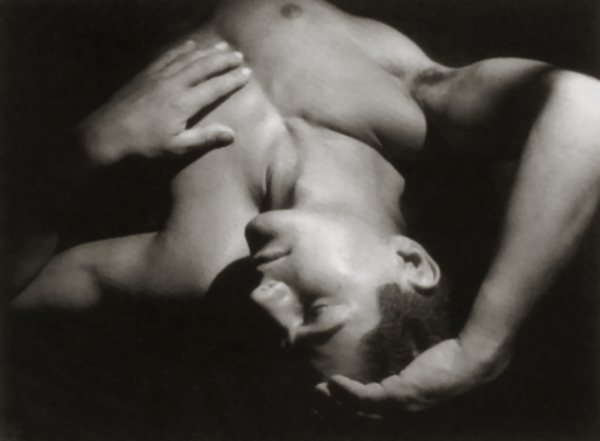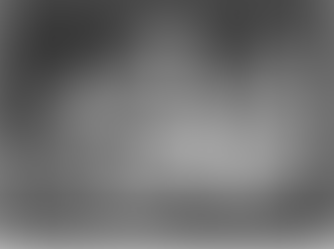
Raymond Voinquel, born 11 January 1912 in Fraize (Vosges), was a French still photographer who specialised in portraits, working on films, photographing film stars like Louis Jordan and Jean Marais and making photography series which pay tribute to the work of Michelangelo.

Having a great sense of lighting, he worked from 1931 to 1977 on 160 films, including those of Marcel Carné, Henri Decoin, Jean Cocteau, Yves Allégret, Max Ophüls, Jean-Pierre Melville, Luis Buñuel, Renoir, Marcel L ' Herbarium and Alfred Hitchcock to name a few.
He began his career as an intern at the private Saint-Joseph school in Dijon, then went on to attend the private college La Malgrange in Nancy from 1925 to 1926. For his communion in 1925, he was offered a camera from which he would take his first shots.

In 1930, he met his first model: Adolphe Menjou on the set of the film Mon gosse de père at the Joinville studios. He would take his first ever actor photo with Menjou in front of Le Majestic. The same year, his meeting with Roger Forster, a pioneer of cinema photography, who hired him as an assistant, would definitively orientate his career. With his 20X30 camera he would take pictures after the scenes had been filmed. Starting out as an assistant he worked on a few films such as La chienne, Mam'zelle Nitouche and Don Quichotte.

He would go on to photograph famous actors directed by some of the greatest directors. He brought his know-how to La porte du large (1936) by Marcel L'Herbier, L'armée des ombres (1969) by Jean-Pierre Melville and Paris brûlle-il? (1965) by René Clément. He worked with the most important French and foreign directors: Jean Renoir, Alfred Hitchcock, Sacha Guitry, Jean-Pierre Melville, Jean Cocteau, Joseph Mankiewicz, Max Ophuls, Luis Bufiuel, Marc Allégret, Anatole Litvak, Marcel Carné, Sidney Lumet, Billy Wilder and Luis Buñuel.
Throughout these years, he created a collection of portraits of the greatest stars of cinema, from Gary Cooper to Alain Delon, from Arletty to Michèle Morgan and Erich von Stroheim to Sacha Guitry. Voinquel also went on to be co-author and chief operator of some short films.
In 1940, he planned to illustrate “Narcisse” , a poem by Paul Valery. During the second war he entered the prestigious "Harcourt studio" as portrait painter, all the while continuing to grow his collection of numerous portraits of actors and movie stars. At the same time, he practiced fashion photography and conducted research on the landscape, particularly on the nocturnal landscape imbued with a mysterious atmosphere, during his Parisian walks or his travels.
In 1941, he photographed sportsmen at the Bordeaux stadium creating striking images. He devoted himself to male nude photography. Louis Jourdan and Jean Marais posed naked for him and he aimed to pay tribute to Michelangelo through other male nude photographs. These portraits are what he is now best known for.
Certain actresses whom he admired like Arletty, Edwige Feuillère or Danielle Darrieux trusted him absolutely behind the camera. Voinquel said that he took better pictures of the people he knew well. He would then stage portraits or photos from film sets by bringing all his sensitivity into the images.
His way of approaching photography like a craftsman attracted people from overseas leading him to work on international productions. Voinquel also became a fashion photographer for the magazines Silhouette, Harper's Bazaar and Vogue. Below is a section of an interview where Voinquel talks about his work in fashion photography.
"Photography is anything and everything today, any old shutterbug! Amateurs are lovely but let them prove themselves before publishing such trash. I’ll tell you why I gave up fashion: because it became so horrible! When I started working in fashion, around 1935, it was another world. I worked with Hoynigen-Huene and Durst, not as an assistant, but as a team, working together, exchanging ideas. And I worked a little for Bazaar, not much. One had to be very snobbish to work for Bazaar, like Cecil …, Cecil Beaton. Unfortunately, not much of my work remains from that period; at the time I was really involved and completely absorbed in the cinema. Between films, I would jump back to fashion work. At that time, fashion was not greatly respected and this really allowed one a great deal of freedom. You could do the most marvellous things. One Spring day I took off in a truck for the forest of Fontainebleau with 200 meters of white tulle, and a 17th-century Portuguese bed.
It was extraordinary… I believe it was for Bazaar. I can’t quite recall. We set up the bed under a magnificent old oak tree, and the sunshine through the leaves made the light like lace. We spent the entire day on the one photograph. The prop-men had to keep climbing the trees to control the tulle so that it would fall, flowing continuously like waves, over and over again. The girls were like exotic birds in a cage. You can’t do that today! I took girls out onto 17th-century rooftops! And if you think that was easy in high heels. I was the first to take a model outdoors. During the war no one wanted to let me out with women in evening gowns… (laughter)"
At the Cinema Photography L'Hommage Festival of Cannes 1988, his work was celebrated and he became a grand prize winner. Two books have been made of his work but they are rare and subsequently very expensive.
Raymond Voinquel is above all a film photographer. His rich and varied work goes far beyond the cinema. He easily travels from portrait to male nude to the landscapes that he made for his own account. Passionate about drawing and painting, he mixed with the bohemian world of entertainment.
He worked with landscapes in the midst of night, always with his sense of lighting. Women and men were not treated the same. As much as the women are defined by light, the men are defined by the dark. Lover of the beautiful, Voinquel developed a modern vision of the male body which made him the forerunner of many contemporary photographers.
He denied the existence of a Harcourt style. For him, the only really important thing was to know the person you are photographing in order to give a result closer to reality, closer to the truth. He would do this by arranging a bar in an empty room where he would have a drink with those he would be photographing, to get to known them on a deeper level.
"He was a photographer fascinated by the beauty of the male body, the men are elegant, enigmatic and beautiful while the women are distant, inaccessible, sweet, sensual. Manly or androgynous, the bodies photographed by Voinquel have the character of dreamed perfection found in his portraits. He builds his photographs, thanks to the science of lighting, the light is always skilfully dosed with great subtlety, to allow the nudes to emerge from the dark, to sculpt the bodies and soften the contours, the shapes. Lover of the beautiful, master of light, Raymond Voinquel has built a style, a work in which reality has become the mirror of his dreams, a photographic dream haunted by the ephemeral beauty of faces and bodies."
Voinquel died in Paris in 1994 and the State acquired all of his photographic collections and entrusted their conservation to the mission of photographic heritage.
Reading Recommendations & Content Considerations
Photographies Les acteurs du rêve
1930-1988 C. Berthoud, P. Bonhomme, F. Denoyelle









































































































































Comments